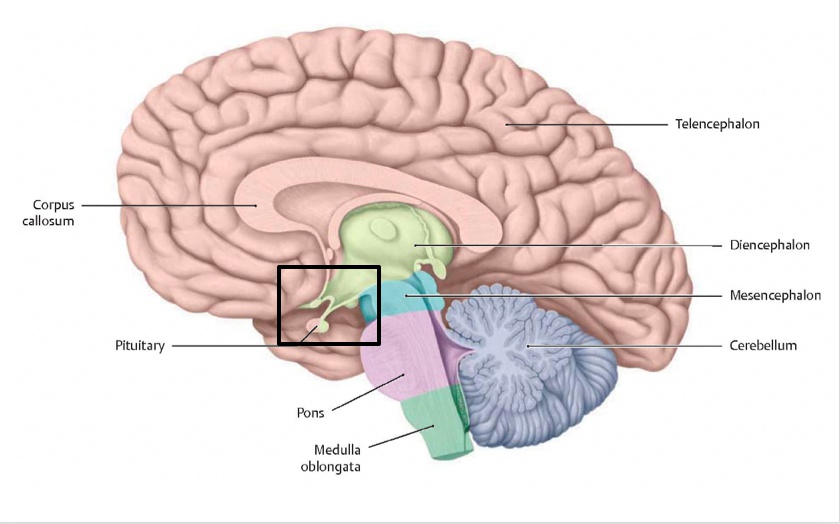06 Pituitary Anatomy
- Neural tube: neuroectoderm
- Stomatodeum: ectoderm
- Digestive tube: endoderm
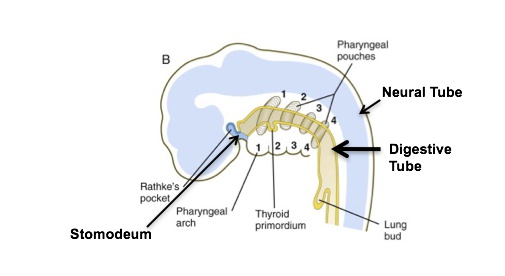 ..
..
During the third week, the infundibulum forms as a diverticulum from the diencephalon (neuroectoderm from neural tube) grows ventrally toward the stomodeum which is the primative oral cavity.
Simultaneously, an ectodermal placode appears in the roof of the stomodeum. This becomes the hypophysial diverticulum or Rathke’s pouch (outgrowth of oral cavity).
Rathke’s pouch grows dorsally and looses its connection with the stomodeum. the stalk left from stomatodeum apoptosis and no longer attached..
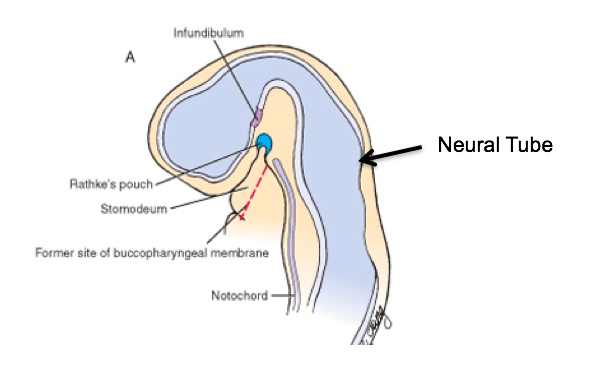
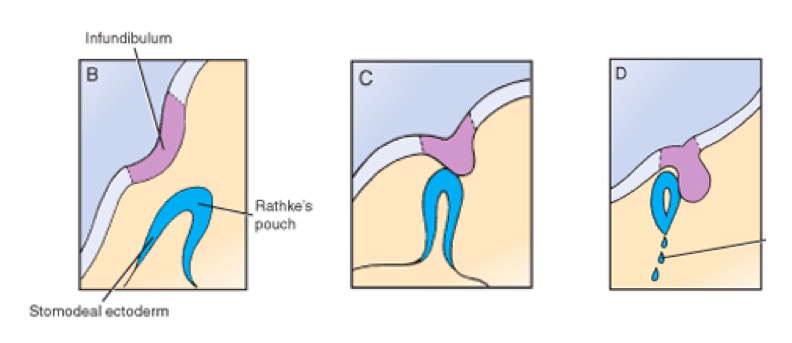
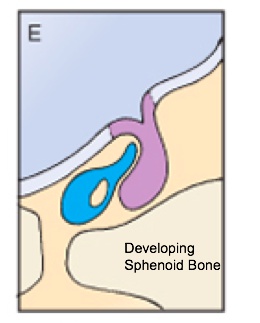
Cells of the anterior wall of Rathke’s pouch increase rapidly and form the pars distalis of the adenohypophysis. Posterior wall doesn’t develop much and grows along infundibulum to develop into the pars intermedia
Small extension of this lobe, the pas tuberalis grows along the stalk of the infundibulum and eventually surrounds it..
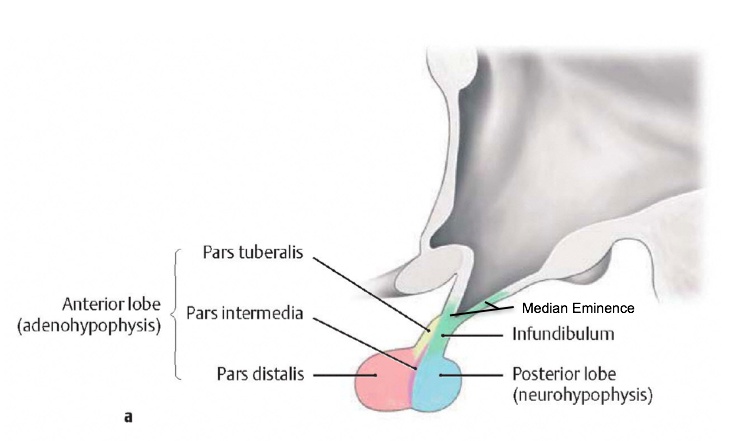
Anterior pituitary derived from ectoderm.
Posterior pituitary derived from neuroectoderm..
Craniopharyngioma
Benign tumor of pituitary gland, Derived from remnants of Rathke’s pouch. Instead of apoptosis, the remnant proliferate, , form cyst, and calcified. White and shiny. If occupy too much space (headache), must be removed.
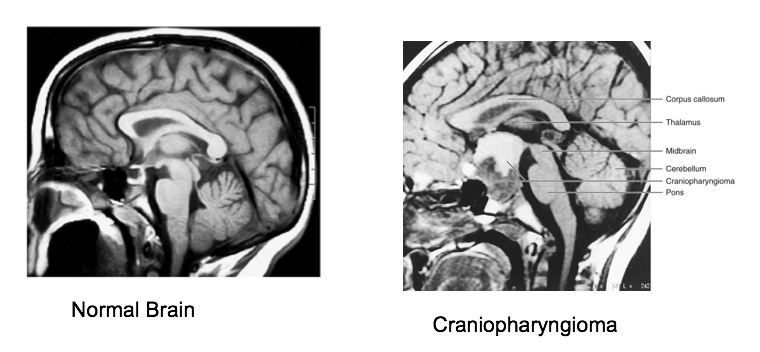
Surface ectoderm in cyst because derived from Rathke's pouch..
Symptoms are from compression of brain tissues:
- Hypopituitarism
- Headache, visual field defects
- Behavioral change from frontal lobe dysfunction..
Bimodal distribution of occurrence:
- 5-14
- 65-74.
Pituitary Anatomy
Pituitary sits in the sella turcica (turkish saddle) of the sphenoid bone..
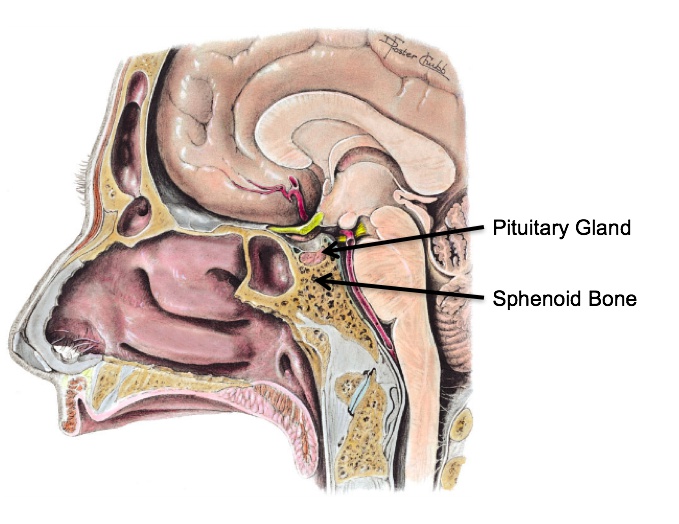
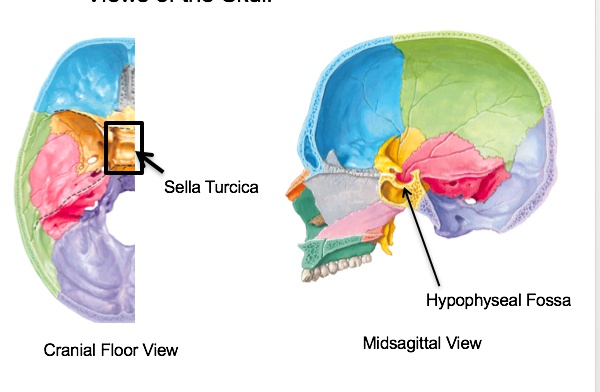
Anterior lobe
Aka adenohypophysis because its is comprised of hormone-producing glandular cells (forms 80% of gland).
Consists of:
- Pars tuberalis
- Pars intermedia
- Pars distalis.
Posterior lobe
Aka neurohypophysis because cells look like glial cells similar to cells of nervous system. Contains axons and nerve terminals from hypothalamus.
Consists of:
- Median Eminence
- Infundibulum, aka pituitary stalk.
Median Eminence
- One of the circumventricular organs (CVOs)
- Does not contain BBB.

